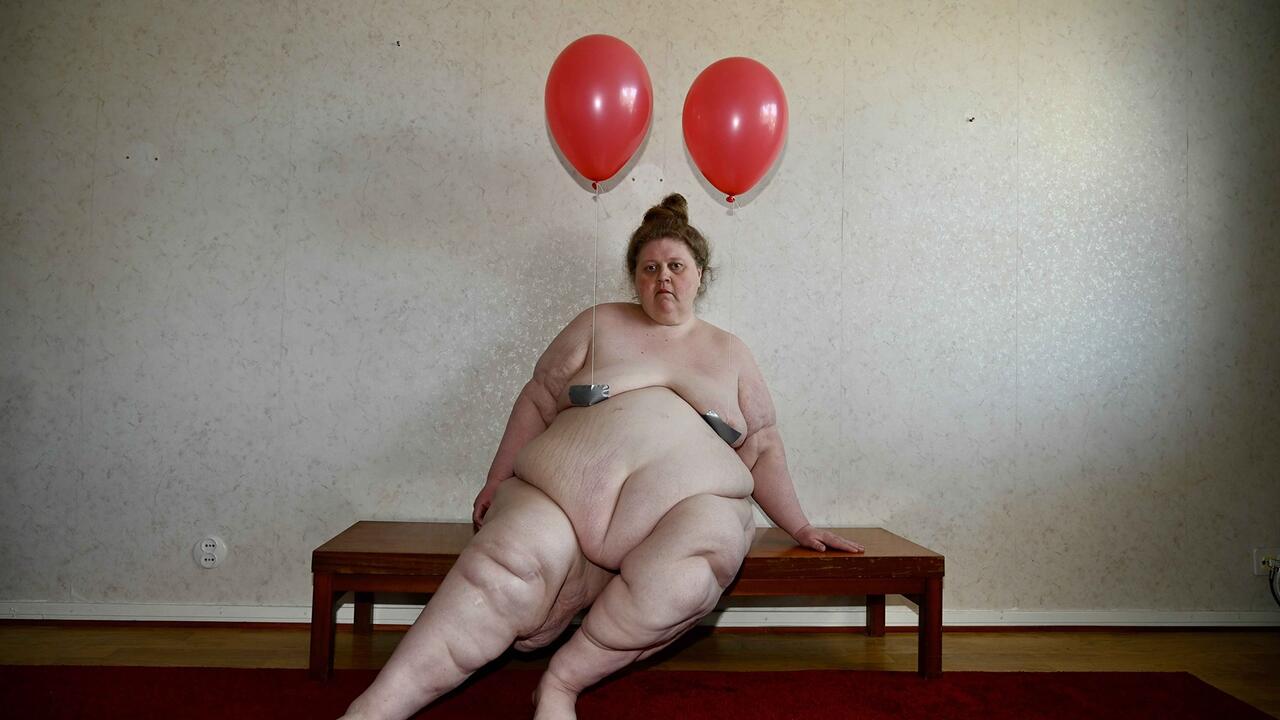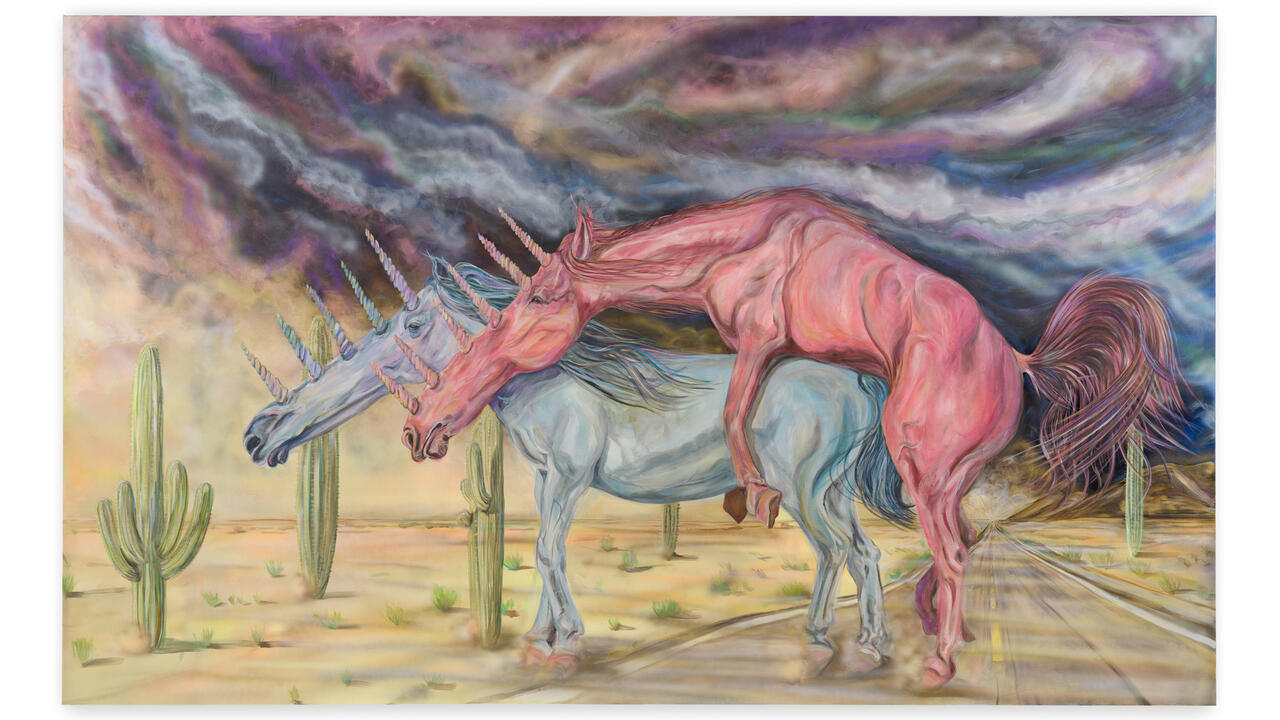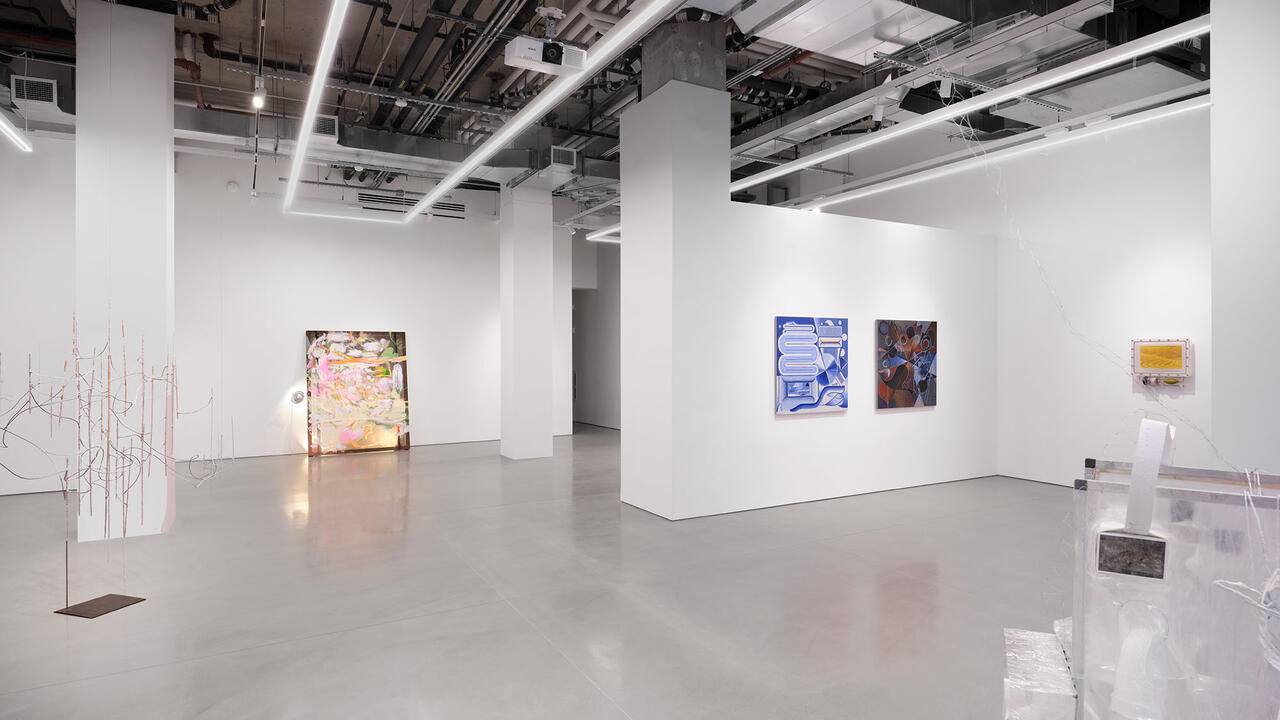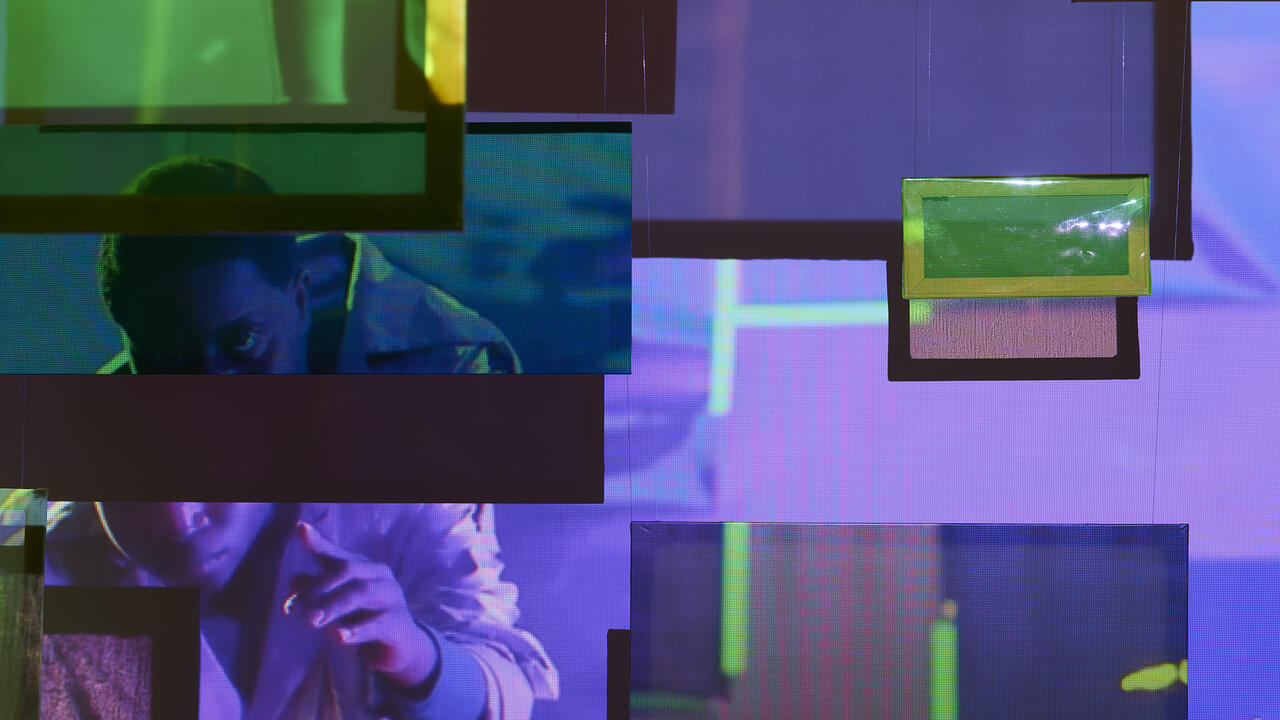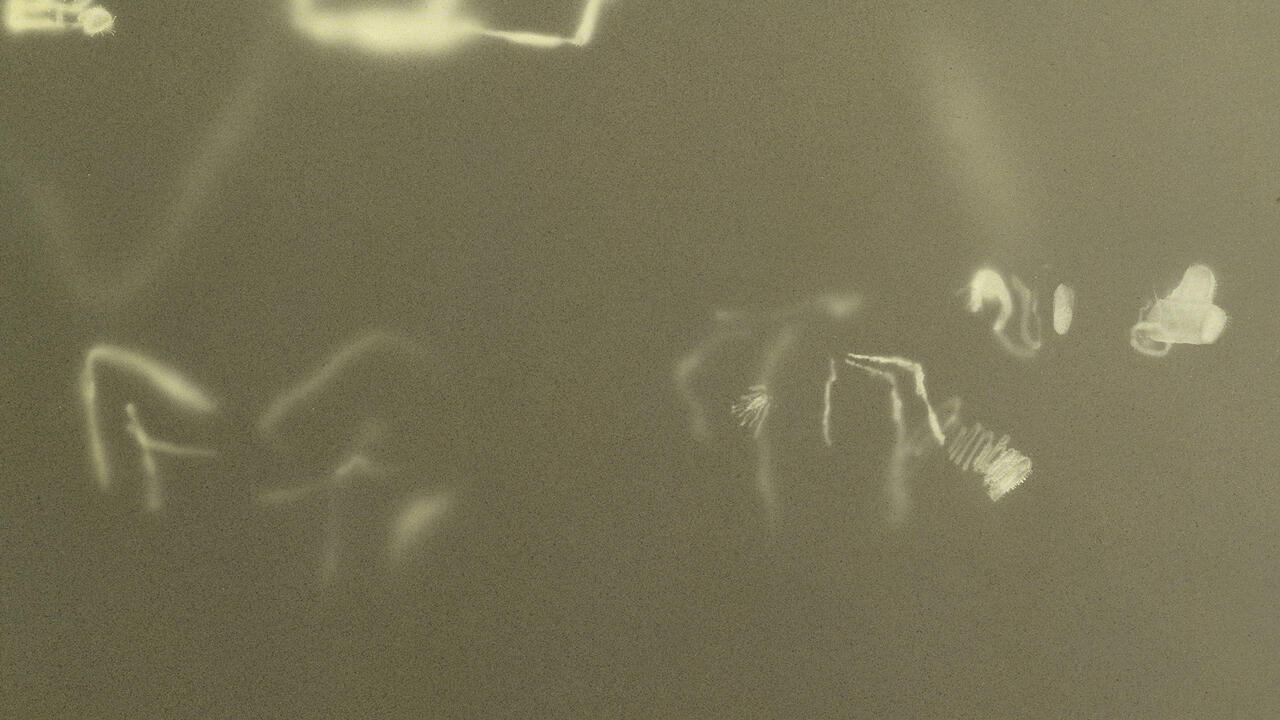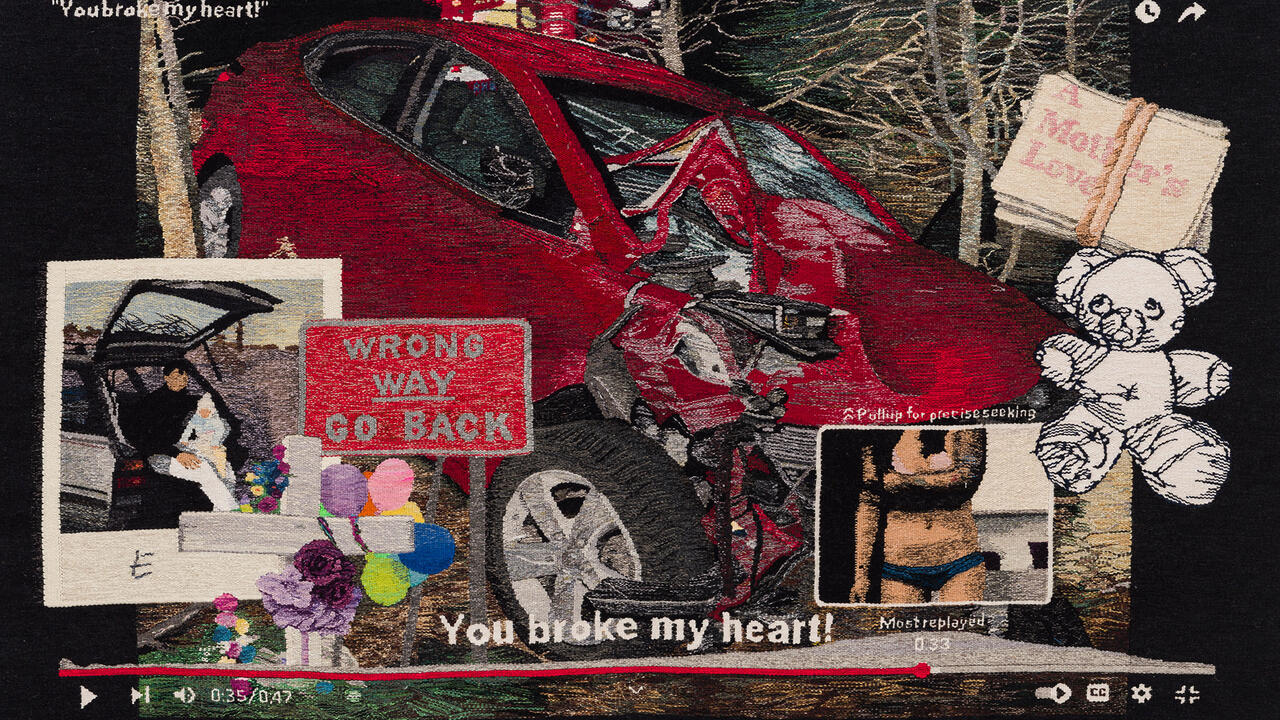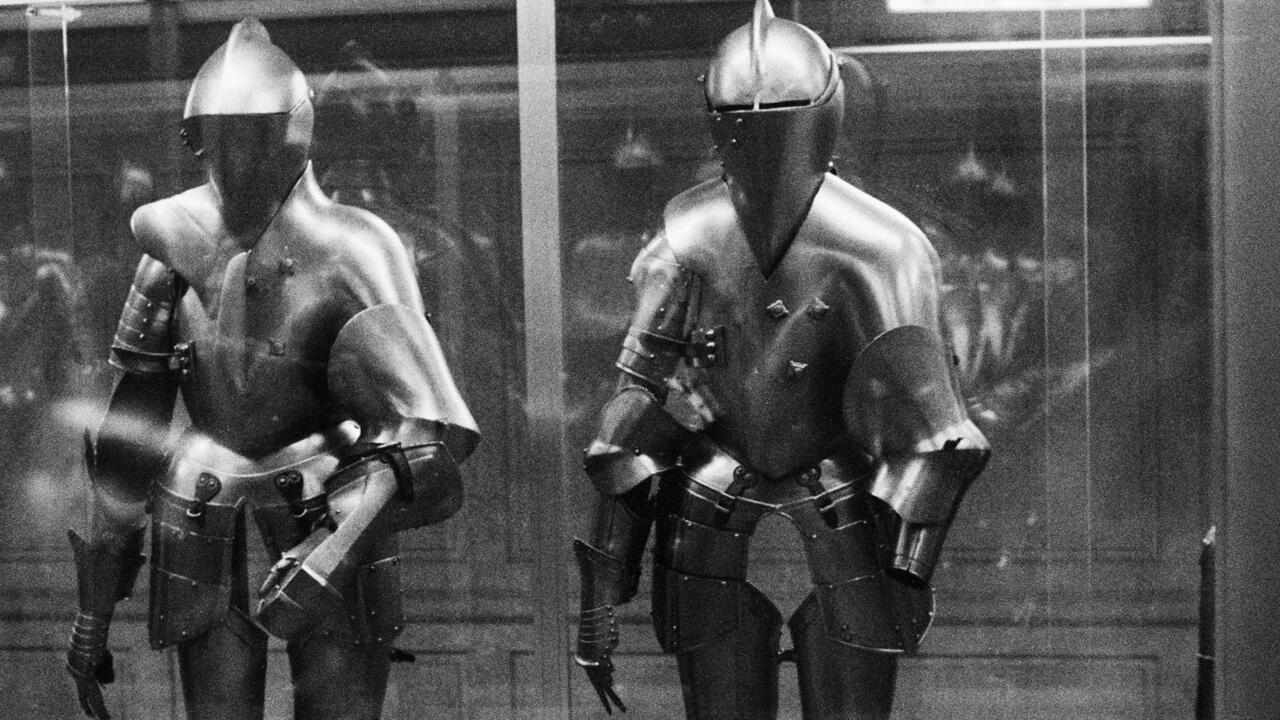Tracing the Legacy of Asger Jorn, ‘Vandal’ of the Vanguard
In a lively group show at Petzel Gallery, the late Danish artist’s irreverent ‘modification paintings’ are presented alongside some of the many works they later inspired
In a lively group show at Petzel Gallery, the late Danish artist’s irreverent ‘modification paintings’ are presented alongside some of the many works they later inspired

Why reject the old if you can modernize it with a few strokes of the brush?’ Danish painter Asger Jorn posed this rhetorical question, alongside a few sundry aesthetic decrees, in a text that accompanied the 1959 exhibition debut of his so-called ‘Modification paintings’ at Galerie Rive Gauche in Paris. He continued:
Painting is over.
You might as well finish it off.
Détourn.
Long live painting.
As evidence of such imperatives, Jorn hung several paintings bought in flea markets to which he had added his own painterly flourishes and prominent signature. The banal landscape of Little Gray Home in the West (Modification) (1959) reveals intrusions of spindly black, white and red paint, along with a garish blue applied to an otherwise pale sky. Indebted to American Action Painting and European Informalism, Jorn’s crass skeins of paint beg various questions. Are they earnest or ironic? Do they form part of a rescue operation, or an attempt to destroy the institution of painting? Or is the one – like the elements coexisting with aplomb on the canvas here – simply tantamount to the other?

It is upon Jorn’s example that this exhibition of more than 30 artists stakes its premise: a range of aesthetic (or anti-aesthetic) interventions into pre-existing imagery. On various walls are stencilled relevant quotations by luminaries from Baudelaire to Guy Debord, Jorn’s fellow co-founder of the Situationist International. Spanning several decades, the show’s components take various forms and formats, from a 1934 collage by Max Ernst to recent works by Jim Shaw and Jacqueline de Jong. Further subtending the eponymous legacy of Jorn’s Modifications is the history of Duchamp’s ‘rectified’ readymades, like his L.H.O.O.Q, present here in an editioned print (1919/1964). One of Jorn’s most infamous Modifications, The Avant-Garde Won’t Give Up! (1962), reveals a moustache painted onto an academic portrait of a young girl, much like its Duchampian precedent – an avant-garde gesture Jorn reveals to be as art-historically reified as the original Mona Lisa itself.

Invoked to similar ends are the Picasso-esque imagery and scribbled lines in two works by Rachel Harrison both titled The Classics (2018), which underscore the weighty precedence not only of avant-garde aesthetics but also of their glossy invocation by contemporary artists. Created during the same period as Jorn’s Modifications, some works by Daniel Spoerri and Enrico Baj lend contextual heft to the exhibition (the proverbial ‘Détrompe l’oeil’ of Spoerrie’s Attention: chien méchant, 1962, is particularly arresting). The exhibition casts a wide conceptual net by including artists’ modifications of their own previous work: Lee Krasner’s collages made from her own previous drawings, for instance, are mounted on canvas in such a way as to suggest restored Renaissance frescoes.
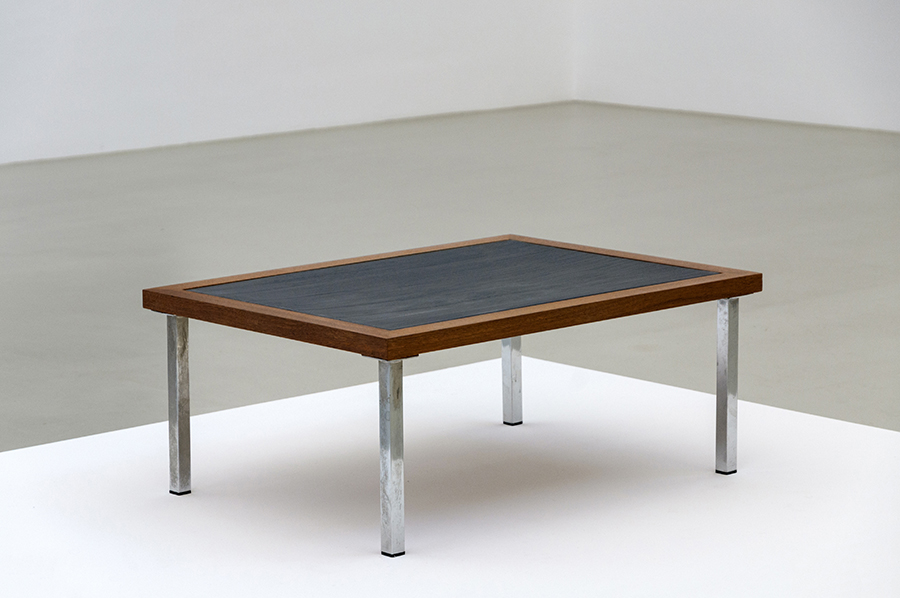
Martin Kippenberger’s re-purposing of a 1973 Gerhard Richter painting as a coffee table (Model Interconti, 1987) conjures up questions of aesthetic rivalry on the order of Rauschenberg’s Erased De Kooning Drawing (1953). Indeed, the exhibition’s generous inclusions underscore some of its omissions. Why Mike Kelley and Ray Johnson, but not John Baldessari? The trompe l’oeil collage pieces appended by John Stezaker to found paintings – which look at first like holes in the canvas – recall Baldessari’s ‘Noses and Ears, Etc.’ (2006) to striking effect. More pointedly political are Betty Tompkins’s series of Women Words (2018), in which the artist has scrawled gender-inflected texts onto the bodies of women in reproductions of famous works by male artists. ‘Hot skank he said she would do anything to get it’ reads the female form in Tintoretto #1. Flying in the face of radical commitment – and well wide of the exhibition’s otherwise auspicious premise – is the inclusion of Julian Schnabel’s self-produced inkjet prints vandalized by the artist himself. There is a twisted irony – an unwitting one, alas – in presenting Julian Schnabel’s work in a gallery with Debord’s writing on the walls.
‘Strategic Vandalism: The Legacy of Asger Jorn’s Modification Paintings’ is on view at Petzel Gallery, New York, until 13 April 2019.
Main image: Enrico Baj, Come Here, You Fair Girl (detail), 1959, oil, collage, padding, glass, decoration, fabric on ready-made canvas, 90 × 105 cm. Courtesy: Archivio Enrico Baj, Vergiate









